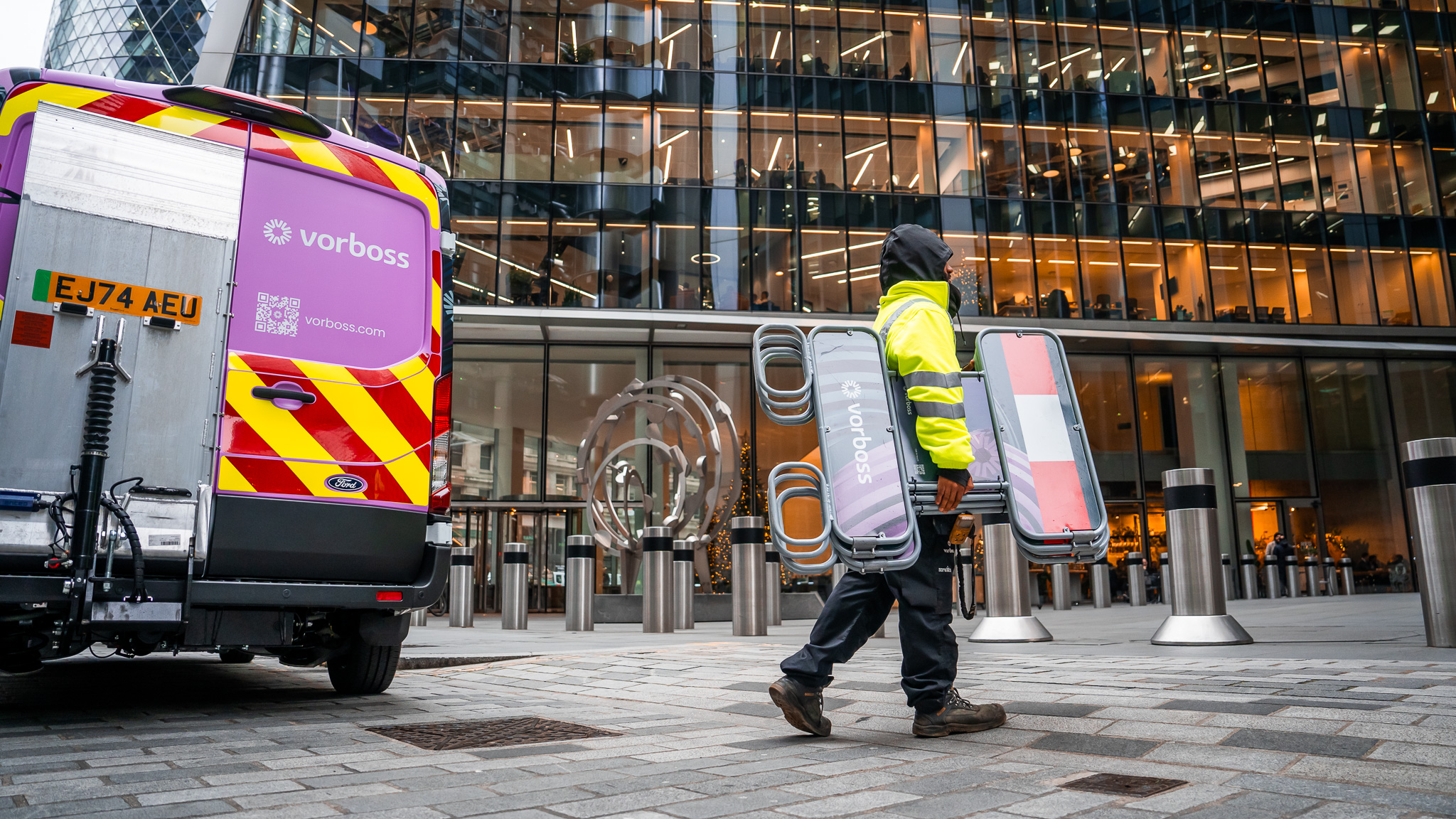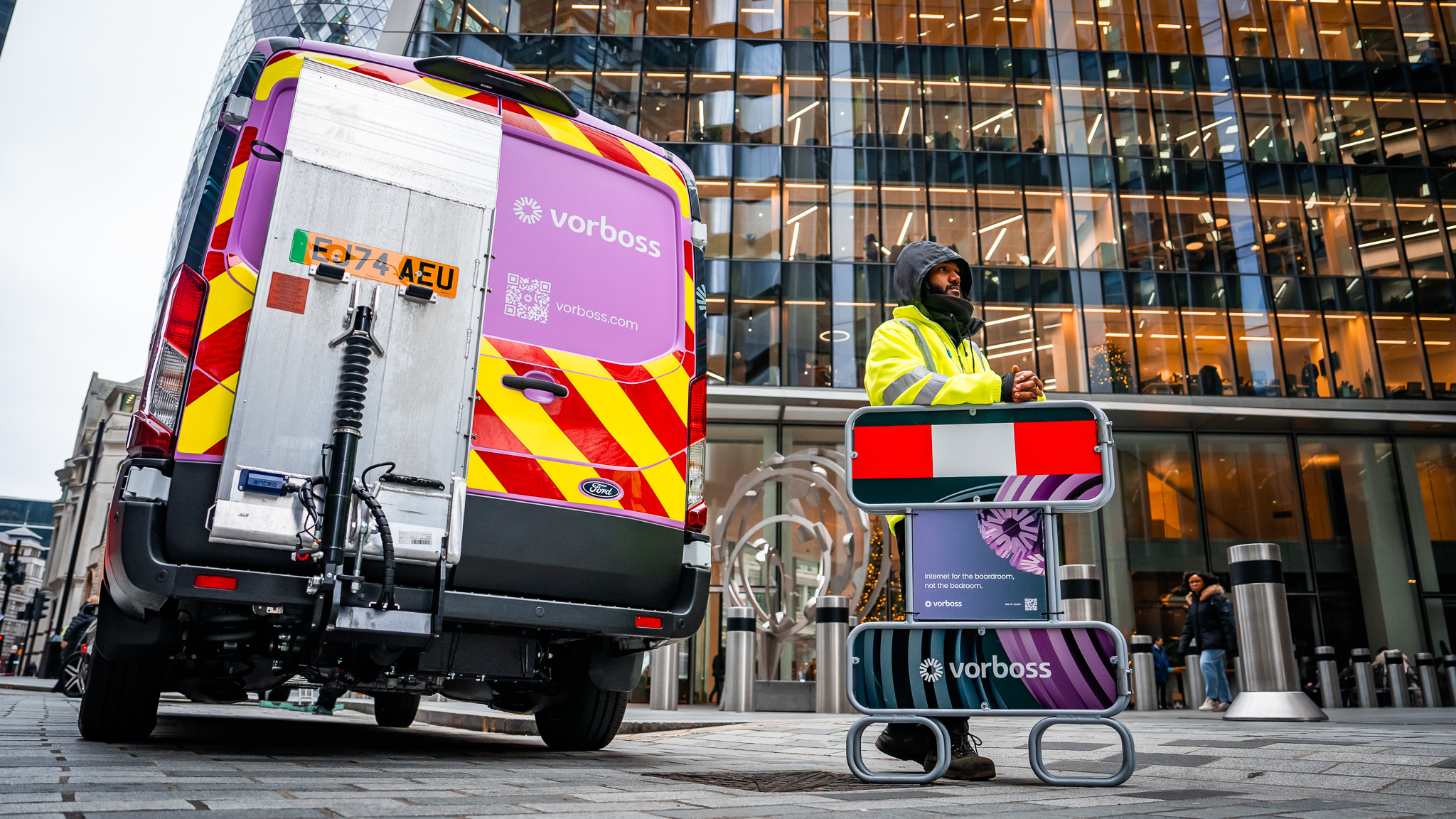Connectivity is the catalyst for London to become a global leader
November 10, 2022
|
3
min read

Highlights
UK infrastructure ranks fifth lowest in the EU for fibre connectivity, leading to bandwidth constraints, slow speeds, and limited productivity. Vorboss advocates for better digital infrastructure, setting 10Gbps as the minimum necessary bandwidth for businesses to operate without limitations. The aim is to drive innovation and attract talent to maintain London's status as a global leader.
As we've seen yet another leadership change here in the UK and an emphasis on prioritising growth, we must recognise that world-class connectivity is critical for London’s global competitiveness. UK infrastructure lags far behind international competition, ranking fifth lowest in the EU for fibre connectivity. If the UK is to compete on the world stage, we need to ensure the City’s infrastructure can keep up with that growth.
Bandwidth constraints mean that slow speeds and freezing video calls are all too common, and ultimately limit productivity, but why? Faster connectivity – 10Gbps and beyond – is possible right now. 10Gbps isn’t widely available because incumbent providers are looking to protect their margins, or because their network hasn’t been built with that capacity.
Currently, most London businesses are reliant on Openreach, meaning they are all essentially buying connectivity from the same infrastructure asset, even if they are purchasing through a reseller. These legacy structures have led to poor customer service, inflated, inconsistent pricing models and overly complex installation processes. This results in a product not fit for purpose.
All of this is hampering productivity and restricting the growth of our economy. We need superior digital infrastructure to ensure businesses are not held back by something as basic as their bandwidth.
Our network is dedicated to business users only. We do everything ourselves in-house. Operating in this way removes the need for the resellers that are a precondition for accessing Openreach infrastructure. We deliver 10 Gbps as the new minimum standard, and can quickly ramp a business up to 100Gbps business internet. For any other supplier to do this would require them to rewire their entire network from scratch.
More needs to be done on an industry level to safeguard London from falling behind competitively. There are three actions which will unlock the potential of London’s businesses:
1. Connectivity has become an essential utility. In abundance, connectivity will enable growth and power the shift to London becoming a smart city. Companies must have access to a purpose-built fibre network, designed purely for businesses, without the distraction of catering for residential consumers.
2. Make 10 Gbps the mandatory minimum standard for business connections, so bandwidth should never be an issue. We will all come to expect it sooner rather than later. It should be the norm now.
3. Champion a new business model for telecoms built on great service, resilient networks and open, transparent contracts with customers.
For London to continue as a global leader, a hub of innovation attracting the best talent, and driving investment in our capital, businesses must be able to operate without limit. If we don’t get serious about removing bandwidth limitations, with the same focus that we look at removing other factors restricting business growth, we risk London falling further behind. It’s time for a step-change in the industry, and we’re proud to be at the forefront.
By Tim Creswick,
Chief Executive and founder of Vorboss
Tell us about yourself so we can serve you best.
Got a question?
More articles

For many landlords and building managers, the word “wayleave” feels like the responsible route whenever a fibre circuit is being installed on their property. It sounds formal and safe – a neat legal box to tick.
In many cases, however, a wayleave adds unnecessary complexity and delays, frustrates tenants, and can expose landlords to long-term legal risks.
At Vorboss, we’ve connected thousands of office spaces across London without a wayleave, keeping landlords in full control and getting tenants online faster.

What is a wayleave?
A wayleave is a written agreement between a landowner and a telecoms operator. It gives the operator permission to install and keep equipment on private property.
What many people don’t realise is that signing a wayleave also activates “Code rights” under the Electronic Communications Code. These rights go beyond simple permission, they give the operator legal powers to stay on the property indefinitely, access it when needed, and even refuse removal of their equipment in certain situations.
For a typical connection into a commercial building in London, a wayleave can make the fibre installation process slower, more expensive, and limit the landlord’s flexibility long term.
Why a wayleave isn’t required for standard in-building fibre connections
For a standard in-building fibre connection serving a tenant, a wayleave isn’t a legal requirement. Important protections, like building access, fire safety, repairing any damage, and removing equipment, are already covered by the tenant’s lease and usual building rules.
If no wayleave is signed, no Code rights are triggered, meaning the landlord retains full control and the installation exists under a simple, fully revocable licence.
In practice, this gives landlords far more protection and flexibility:
- No legal lock-in – the telecoms operator has no long-term rights to stay or refuse removal.
- Landlords keep full control – equipment can be moved or removed when the building changes.
- Faster fibre installation – no time lost in drafting contracts or solicitor reviews.
- Happier tenants – connections go live quicker; tenants get to move in faster.
By contrast, signing a wayleave and granting Code rights introduces a complex and expensive legal process for any fibre removal or relocation. This can take at least 18 months, plus potential court or tribunal proceedings, making it slower, and far less flexible for the landlord.

Public services across central London are evolving, and the City of London Corporation is leading the way.
Whether you work, live or study in the Square Mile, you’ll soon feel the difference that faster, more dependable connectivity brings.

What is the Future Network Programme?
The City of London Corporation is rolling out the Future Network Programme, a major project to modernise its entire digital infrastructure and bring everything under one unified network.
From offices and schools to iconic green spaces like Hampstead Heath, cultural destinations like the Barbican, and historic markets such as Leadenhall and Old Spitalfields, this upgrade will mean more reliable connectivity across the City’s buildings and public spaces.
It also extends to essential services, including critical sites run by the City of London Police. This enhanced connectivity will support everything from secure communication systems to faster, more resilient networks for emergency operations.
Leading this transformation is Roc Technologies, supported by Juniper Networks and Palo Alto Networks; all powered by the Vorboss fibre network. Together, we’re bringing the City onto a modern digital foundation that’s ready to support its future.
Who the Future Network Programme benefits and how?
The programme is designed for everyone who depends on public services in the Square Mile:
- Students in City-run schools will have fast, reliable connectivity to fully access digital learning tools.
- Public-sector teams will experience smoother hybrid working, better access to online platforms, and more efficient collaboration across locations.
- Residents and visitors will see improvements in public Wi-Fi, digital services, and online access in libraries, community hubs, and other shared spaces.
- The City of London Police will gain a more secure, faster and resilient network that enhances CCTV reliability and enables more effective frontline operations.

.avif)

.avif)

